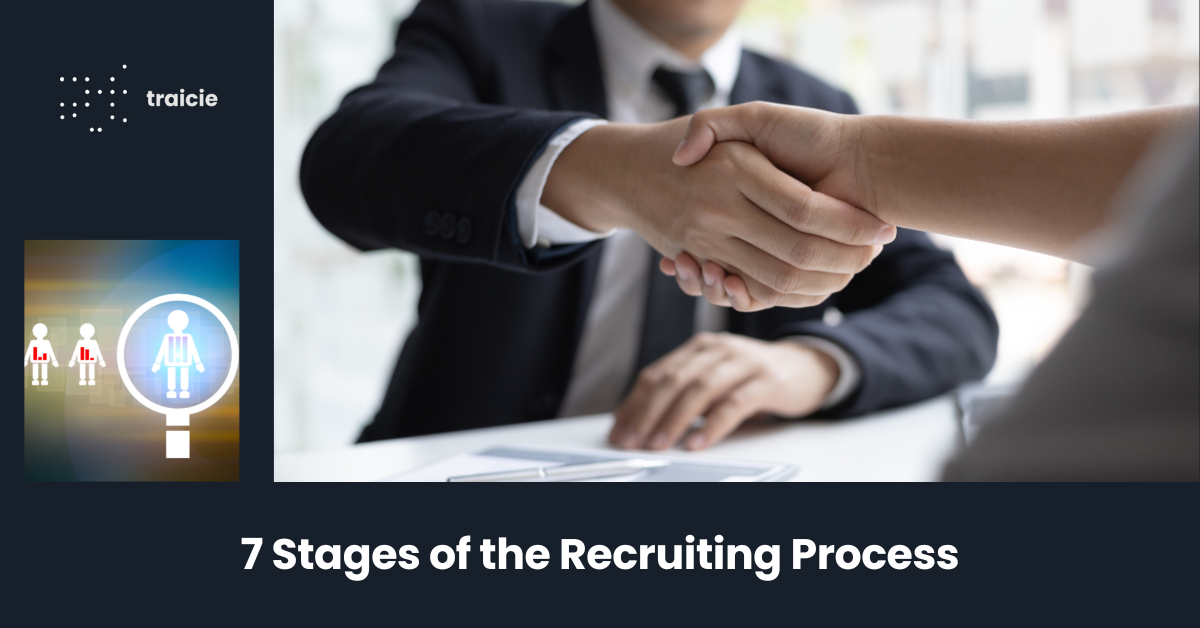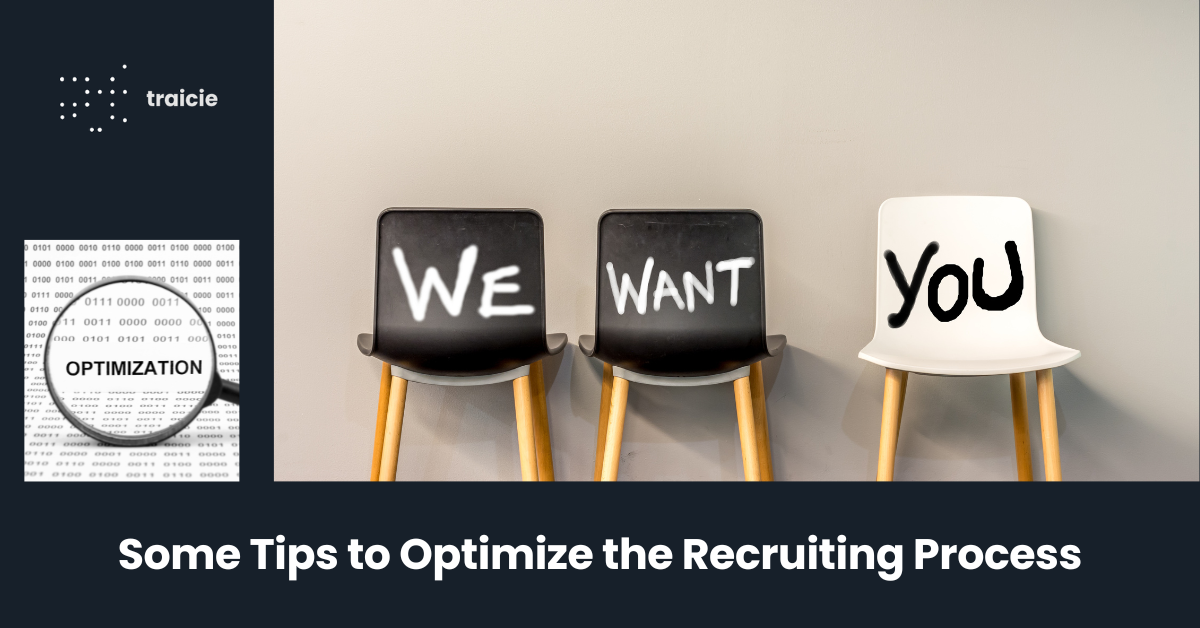The recruiting process is essential for anyone looking for new employees. However, without the proper tools and experience, this process is quite repetitive and time-consuming. It is essential to have a clear grasp of every stage within the recruitment process, to understand where you can optimize your time and avoid repetitive and lengthy work. In this article, we will dig deeper into each aspect of the recruiting process, to provide you with a profound understanding of the entire work process.
An introduction to the HR Recruiting Process
In Human Resource Management, recruitment consists of “finding, identifying, shortlisting, interviewing, and choosing qualified people for specific jobs in an organisation”. It is critical to find the correct people for each job, not only concerning their hard skills. The ideal employee feels at ease within the company culture and possesses the right soft skills for the job.
| >>> You might interested in Free Personality Survey for Career to pinpoint what makes you unique.
The Human resource management’s Recruiting Process entails every step from defining the open vacancy and placing it online, to screening possible candidates and eventually hiring new employees. The HR department is the gatekeeper of the workforce and is responsible for looking for the best additions.
The 7 Stages of the Recruiting Process

Step 1: Planning – the requirements of the vacancy
The first step of any recruiting process is to define the requirements of the vacancy. How urgent is filling up this vacancy, how many new employees are needed, and what is your current budget and capacity for finding these candidates?
When considering setting up a campaign to attract more applicants, keep your own capacity in mind. It has no use setting up a huge campaign that attracts thousands of applicants when you do not have the capacity to screen them. Depending on the size of your project, it might be advisable to set up a detailed marketing plan and figure out which parts of your employer brand to highlight to get the best candidates.
Selecting the correct tools for your project can considerably increase the quality and speed of your recruiting process. Picking out the ideal tools for you at the beginning of your project is the most beneficial time. To avoid integrating a tool halfway through the process.
Looking for the ideal tool to speed up the screening process and support you when figuring out a potential candidate? – Take a look at traicie
Step 2: Analysing – Define your ideal candidate
Next, you need to decide what qualities you want your ideal candidate to have. This means figuring out exactly what would be expected from the new hire concerning tasks and responsibilities within the company. This can include their hard/soft skills, their level of education, and the experience they have. Don’t only think about the skills required for the job, but also keep the entire company in mind, factors such as the company culture have a huge impact on whether or not your candidate will adapt to the workspace.
When writing the external job posting, that you’ll spread through various media tools, keep your audience in mind. Write a posting that will attract or interest your audience.
Doesn’t your job posting attract candidates with the correct soft skills? It might be the way your posting is written. Try to use tools to adapt your language to the language of your ideal candidate – Book a demo
Step 3: Searching – Source for candidates and grab their attention
At this point, you start your search and put the plan you prepared at the beginning of the process into action. This is the moment to post your job on chosen advertising sites and publish any materials, such as social campaigns or careers websites.
If your preparation was successful, candidates will come up in automated searches or apply themselves through your numerous campaigns. For future reference, consider utilizing an Applicant Tracking System (ATS) or other tracking software to collect this data for you. These systems do more than provide an easy organisational structure to guide you through your hiring process. They also gather statistics. By keeping track of where your hires came from, you can make better use of your hiring budget in the future and get the most out of your recruitment campaigns.
Considering including soft skills and culture fit as an impartial benchmark for your sourcing process? Book a demo to learn how we can help you
Step 4: Screening – Make a selection within the sea of applicants
Filtering out the best candidates from the numerous applicants that will be collected is a time-consuming process, but prevents losing even more energy and time at a later stage. Within this step, you select the candidate that seems to fit within the job profile. You try to contact them and get them interested in an interview.
For this step to go well set the appropriate standards/filters to create a benchmark to compare to your applicants. You can take a look at the classic filters, such as “years of experience”, “level of education”, “availability”, and hard skills. However, also make sure to take soft skills and culture fit into account when considering applicants.
At least as important, however, do not forget to respond to the candidates who contacted you, even if they haven’t been selected. Not answering applicants that aren’t selected, can be negative for your company’s reputation.
Step 5: Get involved – Interview, connect, and evaluate

recruiting-process
Once you’ve chosen the best applicants, it’s time to talk to them to find out who would be the best fit for the job. At this stage, communication is essential. Automating your SMS and email outreach can help keep candidates interested and up-to-date throughout the process. During the interview stage, you must plan your questions carefully to determine if a candidate is best suitable for the job.
If you are hiring for work-from-home jobs, video interviewing technology is a great way to interact and engage with your candidates. This lets you get the most out of your interview stage, no matter your challenges. Basically, video interviews are generating similar effectiveness as physical interviews.
Step 6: Selection – Make a hiring decision based on the data
After the interviews, the review process needs to happen. This means comparing how each candidate did during the interview. Multiple hiring managers and candidate scorecards can make hiring more consistent and help fight against unconscious bias.
Make sure to talk about the candidate’s strengths and weaknesses and compare them to the needs of the job set up earlier in the process.
Step 7: Onboarding – Welcome new people to the team
Congratulations, you hired your first employees for the vacancy. You need a strong onboarding plan to ensure your new hires will do well. This means letting your candidate know about their duties, work environment, and coworkers and giving them any training they need.
A positive onboarding process dramatically affects how long employees stay with a company. The more you make new employees feel like they belong at your company, the more likely they will do well in their jobs and stay with you for a long time.
|>>> Read more: Cognitive Biases in Recruitment Process, How to avoid it?
Some Tips to Optimize the Recruiting Process

The recruiting process can be optimised by following these steps:
- Define the requirements of the vacancy.
- Define your ideal candidate.
- Develop a recruiting plan that includes how you will source, screen, and select candidates for the role.
- Post your job opening on online job boards and other relevant websites.
- Review resumes and applications to identify qualified candidates
- Conduct initial phone screenings or in-person interviews with qualified candidates to assess their fit for the role further.
- Extend job offers to the candidate(s) you wish to hire.
|>>> Read more: How to Hire Based on Soft Skills [7 Interview Tips]
Conclusion
The recruiting process can be time-consuming and expensive if not done correctly, but following these steps will help ensure that you find the best candidate for the job.
Remember, we have your back to boost your HR procedures to a higher level.
Do you know that traicie’s sourcing tools for recruiters can help the hiring team with culture-based hiring but also improves the strategic, operational value of the recruiting process :
- Cost of a job board – Reduce annual spending on job boards
- Cost of HR tools – Reduce the cost of surveys and assessment tools
- Recruitment costs – Reduce selection costs
- Internal mobility – Fill more skilled jobs with internal staff
- Time to hire – Reduce the number of days a role goes unfilled
- Salary costs – Reduce overall salary costs
- Attrition – Reduce the rate of turnover
- Recruitment cost – Reduce the general recruitment cost